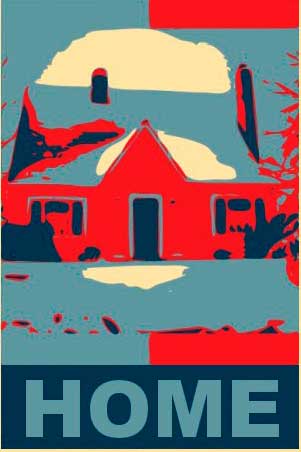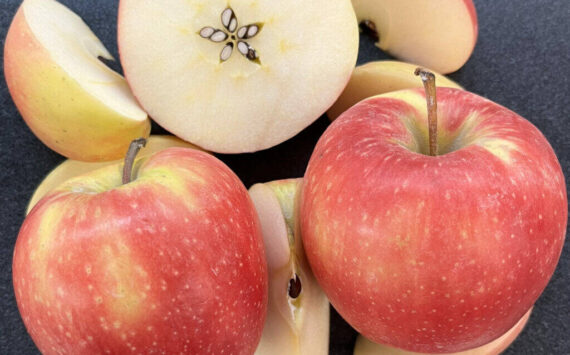Like everything else, being middle class ain’t what it used to be
By Morf Morford
Tacoma Daily Index
Up until 1979, The USA was a predominantly middle class country. Few of us used the term back then, but the vast majority of us lived with a vast range of unspoken, essentially unrecognized middle class assumptions.
Most of those assumptions are the fodder of headlines and hand-wringing editorials and TV specials.


Before 1979 virtually every North American had several solid beliefs about themselves and their children.
Here are several; we assumed above all that our children would be better off – and be more successful than we were. We took it for granted that a family could live well on one income. Anyone who worked could afford a house and college education was the ticket to upward social mobility.
In short, there are many definitions of middle-classness, but the unifying theme is one of aspirations and determination.
Success is out there, for the most part, in spite of our origins if we are willing to work for it. Fair pay for an honest day’s work was a given.
And, perhaps most central, home ownership, financial and career stability and a better future for our children was within anyone’s reach.
No one I know believes even one of those things in 2019 – especially those under 35.


What happened?
As those of us over 45 or so know, many things happened, and they happened with a synchronicity – if not intention – which created vastly more poor people – and many more wealthy people – and far fewer middle class people.
Everything that helped build a solid middle class has diminished or evaporated entirely. From reliable public (and relatively equitable) school funding to majority union membership, to a livable minimum wage, all the basic tenets of the middle class have been compromised. (1*)
Some would argue that the entire premise of middleclassness (if not capitalism, or its companion and corollary – modernity) is inherently flawed –https://www.theguardian.com/commentisfree/2019/may/22/capitalism-broken-better-future-can-it-do-that.
Our (until recently) nearly unshakable belief in the ever-improving possibilities of the future has been threatened by a variety of factors from spiraling deficits, rising costs, depletion of resources, declining international trade, skilled labor shortages and sky-rocketing levels of student debt. (2*)
How did we get to the point where 40% of Americans are at or below the poverty line? 80% of us are in debt? And 43% of those under 18 live under low income levels?
It took decades to get here, but it doesn’t require decades to get out – a few basic policy changes could make a world of difference.
Any cursory study of the history of economics shows that a fair, durable and healthy economy is one that has a broad, diversified base, welcomes innovation and cultivates a workplace, if not society, where opportunity is available to any with the determination to claim it.
The premise of “The American Dream” is exactly this – anyone with the gumption to succeed is free to do so.
The concrete application has not always worked out, but our shared aspiration is an ever more equal, fair and productive economy and culture.
There is absolutely no reason that we cannot establish, maintain and protect a stable, equitable and even more promising economy. (3*)
(1*) To put it mildly, “middle-class” is not a technical term. A firm, clear and universally accepted definition might be hard to find. Here are a few articles that explore this concept – https://www.brookings.edu/blog/up-front/2018/09/04/there-are-many-definitions-of-middle-class-heres-ours/ or https://www.economist.com/finance-and-economics/2016/11/23/you-may-be-higher-up-the-global-wealth-pyramid-than-you-think?
(2*) Hobbling the investment capacity of the next promising generation strikes me as the worst policy any culture could come up with. For more on the generational divide on the economy, I recommend this article – https://www.vox.com/2019/5/22/18617686/baby-boomers-millennials-capitalism-joseph-sternberg? And this NPR Planet Money segment – https://www.npr.org/sections/money/2019/03/18/704519971/the-cost-of-student-debt.
(3*) One alternative, one that has led to decadence, poverty, riots, revolutions and cultural collapse, is also a possibility – https://www.economist.com/books-and-arts/2018/09/13/moneyland-is-an-urgent-expose-of-the-world-of-mega-wealth?. I don’t recommend it.
Measles, mumps and the middle class
By Morf Morford
Tacoma Daily Index
One of the aspects we might not think of as aspect of middle-classness is health care.
One unrelenting example is the controversy over vaccinations. It turns out that middle class parents get their kids vaccinated – poor and wealthy parents, for the most part, are a bit more “hesitant” or not able to get their kids routine vaccinations.
The maps of these 100% preventable – though sometimes lethal – diseases are a study in contradictions – pockets of contagion in the poorest – and wealthiest neighborhoods.
Wealthy parents have “philosophical” objections to vaccinations while poorer parents, for more practical reasons, have difficulty getting their children to medical appointments – especially on a schedule.
The end result is the same – serious, even lethal, contagious diseases, once almost eliminated, have re-emerged – but with a difference.
Poverty and squalor have historically always been the idea medium for cultivating disease.
Middle class single-family homes and childhood vaccinations combined to almost entirely wipe out viral and bacterial scourges – like polio, small pox, measles and rubella – that have ravaged humankind for millennia – until now. (1a*)
This is no abstraction – world-wide about 110,000 died from measles in 2017.
Before vaccinations became widely available, the USA saw 3-4 million measles cases each year – with 450 measles-associated deaths reported each year between 1953 and 1963.
Widespread use of vaccine has led to a more than 95 percent reduction in measles
Antibiotics were the ultimate defense against many of these diseases, but thanks to over use, these are quickly losing their effectiveness.
And thanks to the aloofness of the wealthy and the neglect of the poor, the diseases of the past have returned.
Factor in the constant and nearly ever-present squalor of urban homeless camps – especially those with high frequencies of drug use, non-existent toilet facilities and lack of personal hygiene, you have the ideal habitat for the cultivation of historic – or even newly developing diseases. (2a*)
(1a*) If you want to track the movement of these diseases across the globe, you could start here – https://www.who.int/immunization/monitoring_surveillance/burden/vpd/surveillance_type/active/measles_monthlydata/en/
(2a*) Thawing permafrost in the Arctic is unleashing forms of anthrax and other diseases modern humans have never encountered before. See https://www.scientificamerican.com/article/as-earth-warms-the-diseases-that-may-lie-within-permafrost-become-a-bigger-worry/ or http://www.bbc.com/earth/story/20170504-there-are-diseases-hidden-in-ice-and-they-are-waking-up or https://www.theatlantic.com/science/archive/2017/11/the-zombie-diseases-of-climate-change/544274/








